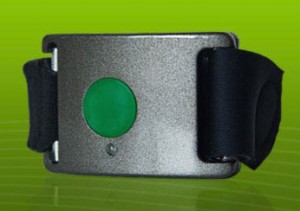 By Neil Versel
By Neil Versel
It’s time for a reality check in mobile and wireless home health, specifically in the area of body sensors. And this bit of buzzkill comes from someone at the forefront of the field, namely Dr. Joseph Kvedar, director of the Center for Connected Health at Partners HealthCare System in Boston.
“Most of the time, I write from the perspective of a technology vision that includes continuous (or near continuous) sensing of multiple physiologic signals. These signals are flawlessly transmitted to a computing environment where decision support can be applied to aid in improved communication with patients and improved decision making by providers,” Kvedar writes in his most recent blog post.
But, alas, what Kvedar calls “connected health” is more like other facets of health IT than some might admit.
“The state of the art today is not so elegant,” Kvedar says. “We use multiple different sensors, both wired and wireless, communicating via a large variety of aggregator devices that then transmit the sensor outputs to us via the Internet. The environment is both user-unfriendly and error prone, which increases the technical support resources required. We have the strong sense that some individuals drop out of programs because the technology is too challenging for them, so we miss them before we can turn them on to the benefits of a connected health experience.”
Kvedar does allow for some optimism, though, courtesy of the Amazon Kindle e-reader, which has wireless connectivity built in and offered at no extra charge. “The marketplace for sensors is changing in a number of exciting, dynamic ways. First, a number of sensors are coming to market that have embedded mobile chips right in them,” he says. These chips automatically find either cellular-type networks or wireless hubs in the home to send data over the Internet.
Kvedar also is excited about the fact that sensors are getting better. “Perhaps the most interesting area of sensor innovation is in the non-physiologic area,” he says. He specifically names Cogito, which offers a product that can predict mood by sensing the user’s voice over the phone, and Affectiva, a company with technology to pick up a person’s emotional state either by facial recognition or by a more traditional armband sensor.
“We’ve had too limited of a view of what we can collect from patients remotely,” Kvedar says, “and these emotional sensors add a whole new dimension to the objective data part of the connected health story.”
Kvedar does not address whether these new technologies are more user-friendly and accurate than earlier products. He does, however, ask readers to share other examples of breakthroughs in telehealth.

















